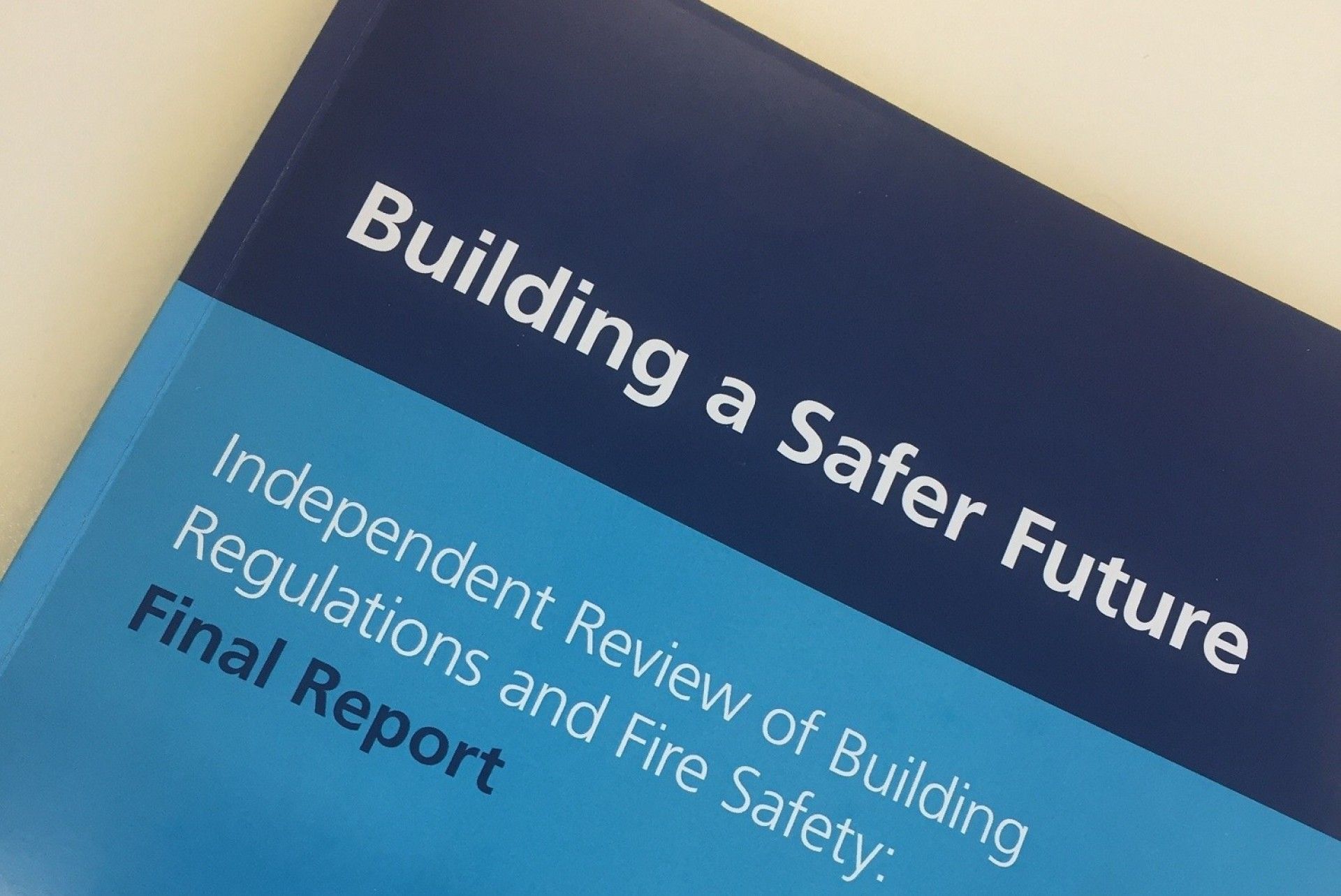
New Regulatory Framework – Joint Competence Authority – [HSE + Building Control + Fire & Rescue]
Building a Safer Future
Independent Review of Building Regulations and Fire Safety: Final Report
An important Alert published by Structural Safety part of ICE is aimed at those who own, commission, design, construct, or maintain multi-occupancy higher risk residential buildings (HRRBs) that are 10 storeys or more in height ...
CLICK HERE TO READ THE ALERT
Dame Judith Hackitt found that:
- Roles and responsibilities for building safety are unclear;
- Regulations and guidance are "ambiguous and inconsistent" and are "misunderstood and misinterpreted”;
- The process that drives compliance with the regulations are "weak and complex with poor record keeping and change control in too many cases";
- Competence (of people in the system) is "patchy";
- Product testing, labeling and marketing is “opaque and insufficient”;
- Residents' voices go unheard, even when safety issues are identified.
In the view of Dame Judith Hackitt, the above issues have helped to create a cultural issue across the sector, which can be described as a ‘race to the bottom’ caused through ignorance, indifference, or because the system does not facilitate good practice.
There is insufficient focus on delivering a building of sufficient quality, in order to ensure that residents are safe, and feel safe. Dame Judith Hackitt has set out a new regulatory framework to address all of these weaknesses with a stronger focus on creating and maintaining safe buildings ...
An excellent informative article by Katherine Metcalfe, a senior associate at Pinsent Masons urges dutyholders to use health and safety law – and the behavioural approach, measuring metrics and competence checks they use to comply with it – as a template to overhaul their approach to fire safety now !
... in the article Katherine Metcalf states:
" Making this work requires competent people. Hackitt expects the industry, and its professional bodies, to take the lead on this. In the meantime, there is a gap. The regulators want to know how organisations can demonstrate competence for the projects they are working on now. Keeping on top of training records and competence portfolios is essential across the whole workforce, including the professional team.
In her interim report, Hackitt highlighted a particular problem with fire risk assessors for occupied buildings. That is not a new problem, but we can expect to see fire and rescue authorities looking much more closely at this.
When assessing the competence of the supply chain, CDM has driven significant change. The system of procurement questionnaires, third party verifiers and lists of approved contractors are a very efficient way to manage the process because they avoid duplication of effort. They play an important role.
However, third party schemes do have limitations. We frequently see organisations falling down on this during HSE investigations. Competence in health and safety is a two stage test and industry schemes can only ever address stage 1. Stage 2 is competence for each particular project.
It would be encouraging to see a focus on this as fire safety competence requirements are standardised. For large-scale projects that last for many years, an industry approach to periodic review of competence would also be welcome.
One final area where firms can start work now is on the “golden thread” of information, or “digital record”. Hackitt's immediate focus is on higher risk residential buildings (HRRB), but the application is clearly much wider. She also recommends that these requirements apply retrospectively to existing buildings.
A lot of the information will already be in the health and safety files being created for buildings. There is an opportunity to expand them to include the additional information identified in the Hackitt report. That will preserve the records and reduce the work to be done later. "
The ICM is ready with its unique CDM Competence Registry™ to meet the challenge and to address 'Stage 2' which is competence for each particular project ~ in fact, ICM's way provides the means of a behavioural approach, measuring the 'team metrics and competence checks' of the transient project teams too!
Ed.
